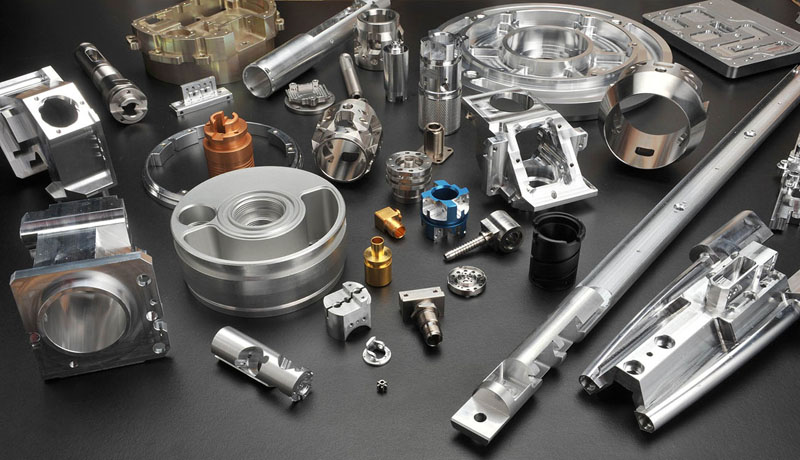Corrosion is a natural process that leads to the degradation of metals due to environmental exposure. It can have significant implications for the longevity and performance of components used in various industries, from construction to automotive to aerospace. To combat this challenge, engineers and manufacturers often turn to corrosion-resistant metals. In this post, we will explore some common corrosion-resistant metals, their properties, applications, and the importance of selecting the right material for specific environments.
What is Corrosion?
Corrosion is the gradual destruction of materials, usually metals, by chemical or electrochemical reaction with their environment. It can occur through various mechanisms, including oxidation, electrochemical processes, and environmental factors such as humidity, temperature, and pH levels. Corrosion not only affects the aesthetics of a material but can also compromise structural integrity, leading to potential failures and costly repairs.
Why Use Corrosion-Resistant Metals?
Using corrosion-resistant metals can significantly extend the lifespan of components and structures, reduce maintenance costs, and improve overall safety. These metals are designed to withstand specific environmental conditions and resist degradation over time. Here are some reasons why selecting corrosion-resistant metals is crucial:
- Longevity: Corrosion-resistant metals can last significantly longer than their non-resistant counterparts, reducing the frequency of replacements.
- Cost Savings: Although the initial cost may be higher, the long-term savings from reduced maintenance and replacement costs can be substantial.
- Safety: Corrosion can lead to catastrophic failures in critical components. Using corrosion-resistant metals minimizes this risk.
- Performance: Many corrosion-resistant metals maintain their mechanical properties even in harsh environments, ensuring optimal performance.

Common Corrosion-Resistant Metals
Stainless Steel
Overview:
Stainless steel is perhaps the most well-known corrosion-resistant metal. The main components of stainless steel are iron, chromium, nickel and other elements. Among them, chromium is a key element in the corrosion resistance of stainless steel, which can form a dense chromium oxide film on the surface of the steel, preventing further corrosion by oxygen and other corrosive media. The addition of nickel can improve the corrosion resistance and toughness of stainless steel.
Types:
Austenitic Stainless:
Contains nickel and has excellent corrosion resistance. Common grades include 304 and 316.
Ferritic Stainless Steel:
Contains less nickel but has good resistance to stress corrosion cracking. Common grades include 430.
Martensitic Stainless Steel:
Contains more carbon and can be heat treated for increased strength. Common grades include 410.
Applications:
Kitchen utensils, medical instruments, chemical processing equipment, and construction materials.
Aluminum
Overview:
The density of aluminum is only 2.7g/cm ³, which is about one-third of that of iron, making aluminum and its alloys significantly advantageous in situations where weight reduction is needed. In addition, aluminum also has good electrical conductivity, thermal conductivity, and ductility, which make it widely used in fields such as electricity, heat conduction, and manufacturing.
Aluminum alloy is an alloy formed by adding other metal elements (such as copper, magnesium, zinc, silicon, etc.) based on aluminum.
Properties:
– Lightweight
– Non-toxic
– Excellent thermal and electrical conductivity
Applications:
Aerospace components, automotive parts, and packaging materials.
Titanium
Overview:
Titanium alloy is an alloy formed by adding aluminum, vanadium, molybdenum, chromium, manganese, copper, iron, silicon and other elements based on titanium. Titanium alloy has the characteristics of high strength, good corrosion resistance, high heat resistance, and low density.
The density of titanium alloy is generally around 4.51g/cm ³, which is only about 60% of that of steel, making titanium alloy significantly advantageous in applications that require weight reduction, also in harsh environments such as seawater and chemical processing.
Properties:
– High strength-to-weight ratio
– Excellent resistance to corrosion and oxidation
– Biocompatibility (non-toxic to living tissue)
Applications:
Aerospace components, medical implants, and chemical processing equipment.
Nickel Alloys
Overview:
Nickel based alloy is an alloy material made by adding other alloying elements (such as chromium, molybdenum, copper, titanium, etc.) to nickel as the matrix. Nickel alloys are known for their excellent corrosion resistance, particularly in acidic and high-temperature environments. These alloys typically contain a significant amount of nickel (usually more than 50%).
Types:
Inconel:
A family of nickel-chromium-based superalloys known for high-temperature strength and oxidation resistance.
Monel:
A nickel-copper alloy known for its corrosion resistance in seawater and acidic environments.
Applications:
Chemical processing, aerospace, and marine applications.
Copper Alloys
Overview:
Copper alloy is an alloy composed of pure copper as the matrix and one or several other elements added. According to different added elements and ratios, copper alloys can be divided into various types such as brass, bronze, and white copper.
Copper alloys have superior properties compared to pure copper, such as high strength, high wear resistance, and high corrosion resistance.
Properties:
– Good thermal and electrical conductivity
– Antimicrobial properties (inherent in copper)
Applications:
Plumbing, electrical wiring, and marine applications.
Choosing The Right Corrosion-Resistant Metal
When selecting a corrosion-resistant metal for a specific application, consider the following factors:
Environmental Conditions:
Assess the exposure to moisture, chemicals, temperature, and other corrosive elements.
Mechanical Requirements:
Consider the strength, weight, and durability needed for the application.
Cost:
Evaluate the initial material cost versus long-term savings from reduced maintenance and replacement.
Fabrication and Machining:
Some metals may be more difficult to work with than others. Consider the complexity of the manufacturing process.
Aesthetics:
For applications where appearance matters, the visual qualities of the metal may also be a consideration.
Conclusion
Corrosion is an inevitable challenge in many industries, but by utilizing corrosion-resistant metals, manufacturers can enhance the durability and longevity of their products. Stainless steel, aluminum, titanium, nickel alloys, copper alloys, zinc, and coated metals each offer unique properties that make them suitable for various applications. By carefully considering the specific requirements of a project, engineers and designers can choose the right materials to combat corrosion effectively, ensuring safety, performance, and cost efficiency in their manufacturing processes.



